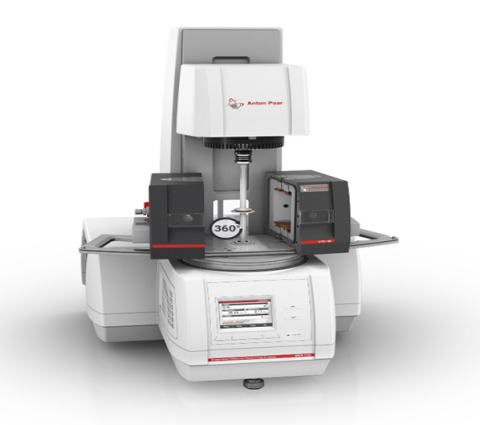
External users: registration to be carried out only through I-STEM portal
Additional information about sample and analysis details should be filled in the pdf form provided in the I-STEM portal under “DOWNLOAD CSRF”
Internal users (IITB): registration to be carried out only through DRONA portal
Additional information about sample and analysis details should be filled in the pdf form provided here.
Make
Anton Paar Germany GmbH
Model
MCR 52
Facility Status
Working
.
Category
- Services » Service
Booking Details
Booking available for
Internal and External Both
Available Equipment/ Mode of use
Manual
Facility Management Team and Location
Facility In Charge
Prof. Lalit Kumar
Co-convenors
Facility Manager
Swapnil P. Raut
Facility Operator
Swapnil P. Raut
Facility Management Members
Department
Energy Science and Engineering
Lab Email ID
swapnil.raut@iitb.ac.in
Facility Location
EN-709, 7th Floor Department Of energy Science and Engineering
Lab Phone No
0
Facility Features, Working Principle and Specifications
Facility Description
Facility Description
Facility Features
- The facility houses the Anton Paar MCR 52 rotational rheometer, capable of advanced rheological testing (viscosity, viscoelasticity, shear stress/shear rate behaviour). Centre for Sophisticated Instruments+2Technology Networks+2
- High precision instrument with controlled shear stress/strain and rotational motion, enabling characterisation of complex fluids, suspensions, gels, pastes and non-Newtonian materials. TI Instruments+1
- Equipped with various measuring geometries (cone-plate, parallel plates, cylinder bob/cup) and temperature-control accessories (if available) to cover a wide range of rheological behaviours. Fluidan+1
- Suitable for research and development, formulation development, quality control, material science, chemistry, biofluids and energy-related flows involving complex rheology.
- Technical support from facility staff for test setup, sample preparation, geometry selection, temperature control and data interpretation (e.g., storage modulus, loss modulus, yield stress).
Features Working Principle
Working Principle
The rheometer works by applying a controlled deformation (strain) or load (stress) to a sample and measuring the resulting response (torque, displacement, shear rate). Wikipedia+1
- In a typical rotational rheometer (such as the MCR 52), a sample is placed between the measuring geometry (e.g., cone and plate or parallel plates). The upper geometry rotates (or oscillates) while the lower plate remains fixed. Shear is induced in the sample.
- The instrument measures the torque required to maintain rotation or oscillation and the angular velocity/strain. From this data, shear stress, shear rate and viscosity are derived. Technology Networks+1
- For viscoelastic materials, oscillatory tests measure storage modulus (G′) and loss modulus (G″) by imposing a small oscillatory shear strain and recording the stress response and phase angle between stress and strain. Technology Networks
- The instrument can thus characterise Newtonian fluids, shear‐thinning or thickening non-Newtonian fluids, yield behaviour, thixotropy, and other complex rheological phenomena. TI Instruments+1
Body Specification
Specifications
Make / Model: Anton Paar MCR 52 Centre for Sophisticated Instruments
Here are typical specification categories :
- Measuring range (torque) – e.g., [insert value] N·m
- Shear rate range – e.g., 0.01 to 1000 s⁻¹ (or as per model)
- Temperature control range – e.g., ambient to [1000] °C
- Measuring geometries supported – Cone/Plate, Parallel Plate, Cylinder Bob/Cup
- Minimum sample volume – e.g., a few mL (depending on geometry)
- Accuracy/repeatability – as per manufacturer data
- Control system: stress and strain controlled rheometer (rotational and oscillatory modes)
Sample Preparation, User Instructions and Precautionary Measures
Instruction for Sample Preparation
Sample Preparation:
- Ensure the sample is homogeneous, free of air bubbles or large particles if required for the test.
- Provide sample volume as required by geometry; clean geometry surfaces, apply sample carefully, avoiding air entrapment.
- Report material type, expected behaviour (Newtonian vs non-Newtonian), temperature range, and geometry preference.
- If testing at elevated or reduced temperature, ensure the sample is pre-conditioned.
User Instructions and Precautionary Measures
- User Instructions & Precautions:
- Book a slot via the facility booking system; provide sample details and test requirements ahead of time. Centre for Sophisticated Instruments
- Trained users only; facility staff will assist with geometry selection, test protocol set-up and run.
- Clean up the sample after the test, remove residues, clean geometry surfaces, and log any irregularities.
- Ensure safe handling of materials, especially if testing high‐temperature, corrosive or particulate-loaded samples.
- Avoid running tests beyond rated shear/stress limits; monitor for instability, slip or instrument alarms.
- Dispose of samples responsibly; keep geometry clean to avoid damaging the instrument.
Charges for Analytical Services in Different Categories
Usage Charges
Applications
Applications
- Characterisation of fluids and soft solids: paints, coatings, adhesives, slurries, gels, food products, biofluids. Technology Networks
- Shear‐thinning and thickening behaviour, yield stress and viscoelastic properties relevant to formulation, product development and process modelling. TI Instruments
- Material behaviour under deformation: polymers, polymer melts, composite resins, battery slurries, drilling fluids. Fluidan
- Quality control of rheological parameters in manufacturing and research contexts, and correlation to performance or processing behaviour.
Sample Details
Chemical allowed
NA
Allowed Substrate
NA
Gases allowed
NA
Substrate Dimension
NA
Target dimension
NA
Contamination remarks
NA
Precursors/ Targets allowed
NA
